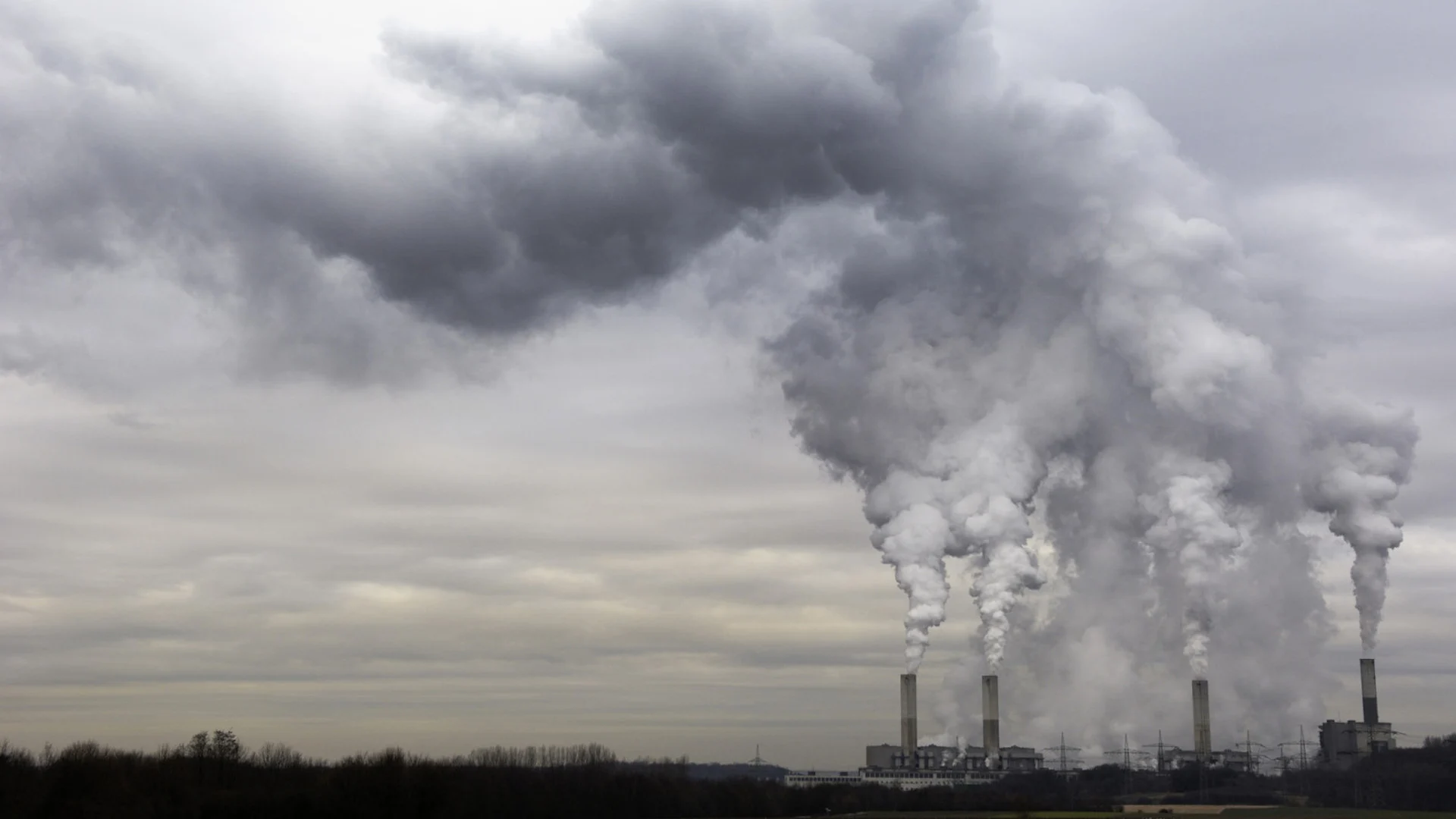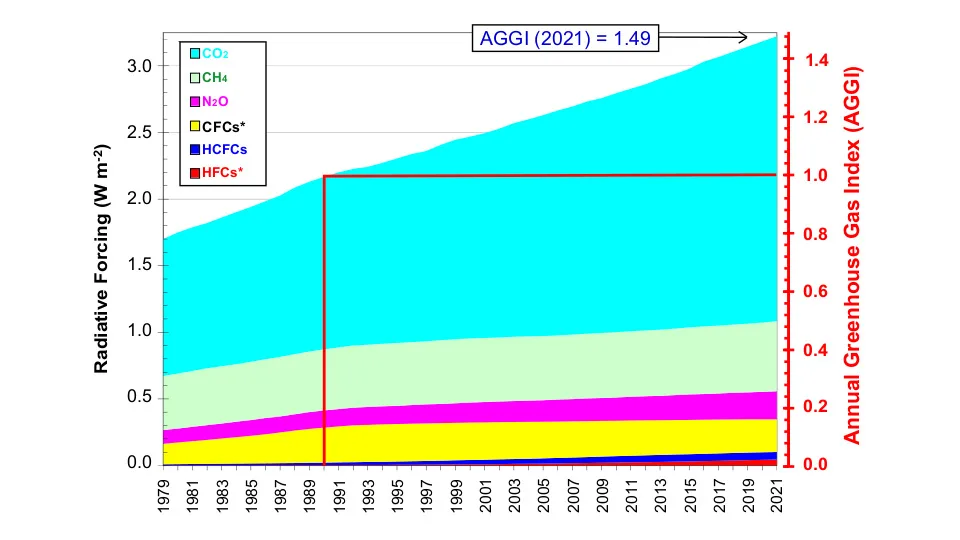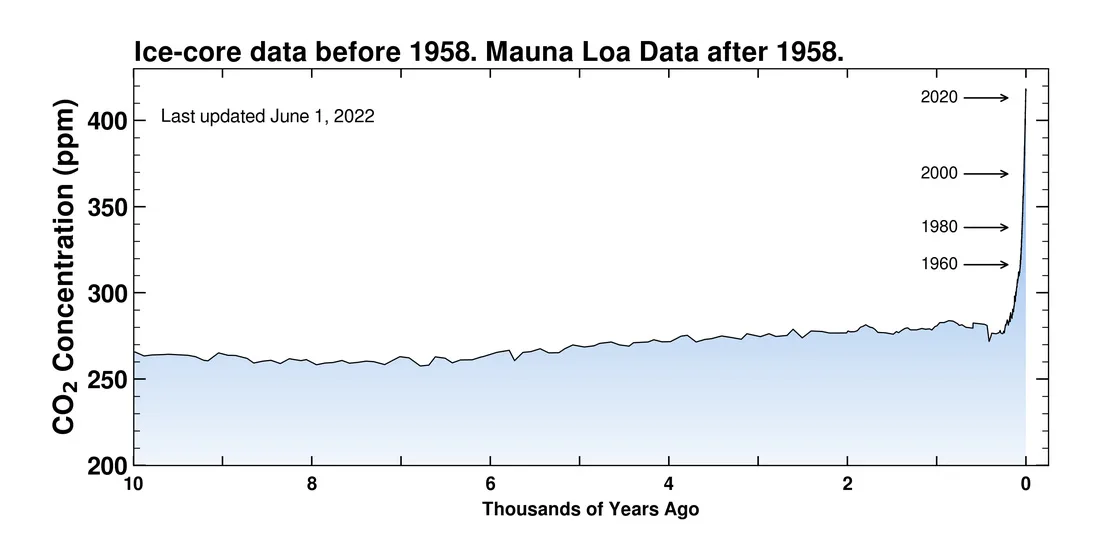
Greenhouse gases are now trapping nearly 50% more heat than 30 years ago
Eliminating carbon pollution is the highest priority for dealing with the climate crisis.
Measurements from around the globe last year reveal that the heat being trapped in Earth's atmosphere by anthropogenic greenhouse gases has increased by nearly half since 1990.
When world leaders signed the Kyoto Protocol back in 1990, promising to reduce greenhouse gas emissions in an attempt to limit climate change, the scientists needed a way to show the impact of those emissions on the planet. To do this, the National Oceanic and Atmospheric Administration (NOAA) came up with a measurement called the Annual Greenhouse Gas Index, or AGGI.
According to NOAA, AGGI is a way of converting the complex scientific calculation of the impacts of increasing greenhouse gas emissions into a single number. AGGI provides a simple way to track the rate of climate change from year to year.
"The AGGI tells us the rate at which we are driving global warming," stated Ariel Stein, who is the acting director of NOAA's Global Monitoring Laboratory (GML), where AGGI is computed. "Our measurements show the primary gases responsible for climate change continue rising rapidly, even as the damage caused by climate change becomes more and more clear. The scientific conclusion that humans are responsible for their increase is irrefutable."
In 1990, scientists computed the influences of these emissions and assigned the results a value of 1 (one). This served as a baseline both for looking back and for comparing the increased impact of greenhouse gas emissions going forward.
The value of AGGI for 1979 was just 0.785. In 2000, the effects of greenhouse gas emissions were up 14 per cent over 1990, resulting in an AGGI value of 1.14.
For 2021 — the latest year for these calculations — AGGI is now at 1.49. That's a 49 per cent increase over what it was in 1990. Compared to 1979, it's close to a 90 per cent increase, meaning that over the past 42 years we have nearly doubled the impacts of global warming.

This graph shows the increase in radiative forcing (the direct influence of greenhouse gases on global warming and climate change) and the related increase in AGGI, from 1979 to 2021. The colours break down the relative contributions from the different greenhouse gases — carbon dioxide (light blue), methane (green), nitrous oxide (pink), chlorofluorocarbons (yellow), hydrochlorofluorocarbons (dark blue), and hydrofluorocarbons (red). (NOAA's Global Monitoring Laboratory).
"CO2 is the main player because it stays in the atmosphere and oceans for thousands of years and it is by far the largest contributor to global warming," GML Senior Scientist Pieter Tans stated in the press release. "Eliminating CO2 pollution has to be front and center in any efforts to deal with climate change."
In 2021, carbon dioxide concentrations in the atmosphere reached a new milestone not seen before in human history: 420 parts per million (ppm).

By measuring gases trapped in ice cores, scientists have shown what carbon dioxide levels were like in the atmosphere going back 10,000 years. This plot of the Keeling Curve shows those proxy measurements along with direct measurements from Mauna Loa in Hawaii since 1958. (Scripps Institution of Oceanography)
That level of carbon dioxide in the atmosphere is not just the highest ever recorded. Based on studies of past climate, it is also the highest concentration on Earth in over 3.6 million years.
"The atmospheric burden of CO2 is now comparable to where it was during the Mid-Pliocene Warm Period around 3.6 million years ago, when concentrations of carbon dioxide ranged from about 380 to 450 parts per million," NOAA stated in 2021. "During that time sea level was about 78 feet [24 metres] higher than today, the average temperature was 7 degrees Fahrenheit [3.8°C] higher than in pre-industrial times, and studies indicate large forests occupied areas of the Arctic that are now tundra."
(Thumbnail image courtesy acilo/ E+/ Getty Images)







